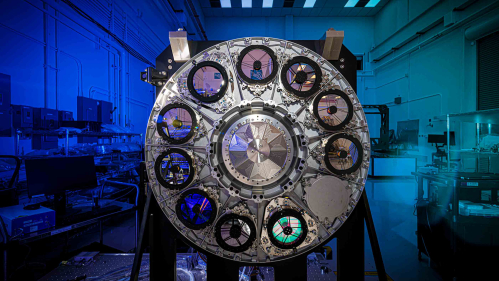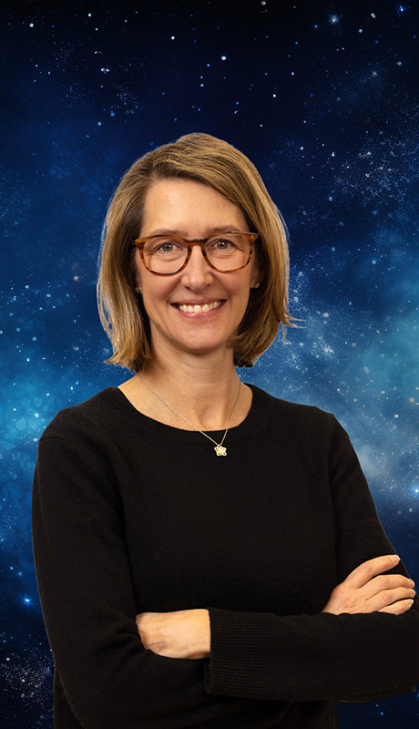Rutgers Astronomer Is Named Mission Head of Science Operations Center for NASA’s Next Space Telescope

The NASA instrument, to launch in 2026, will lead the search for dark energy
Rutgers astronomer Kristen McQuinn has been selected mission head for the Science Operations Center for NASA’s Nancy Grace Roman Space Telescope, an observatory designed to answer many scientific questions while deepening humankind’s understanding of dark energy – an unknown energy source causing the universe’s expansion to accelerate.
McQuinn will hold dual appointments, serving in the lead role while maintaining her post as assistant professor in the Department of Physics and Astronomy in the School of Arts and Sciences.

As mission head, a position she assumed in mid-January, McQuinn is responsible for the continued development and operations of the Roman Science Operations Center at NASA’s Space Telescope Science Institute in Baltimore. As part of her duties, McQuinn also is working directly with a team at NASA’s Goddard Space Flight Center in Greenbelt, Md.
“The Roman Space Telescope will be transformative,” said McQuinn, whose research focuses on the formation and evolution of low-mass galaxies. “We’ve never had a telescope like this before. I look forward to connecting with the broader astronomical community, facilitating open access to Roman’s data, and ultimately getting the best possible science out of the telescope.”
Astronomers plan to use data from the telescope to better understand the expansion of the universe and to home in on exoplanets – planets orbiting stars other than the Sun. They will accomplish this by employing a technique called microlensing, an observational effect that occurs because the presence of mass warps the fabric of space-time. This means that stars can be used to find exoplanets, since their light is bent and focused by gravity as a planet passes by.
What is also learned, McQuinn said, is expected to provide new insights on dark energy, a poorly understood subject.
Astronomers want to know what dark energy is and how it might affect the future of the universe. They also want to be able to predict which of three possibilities is in store for the cosmos. Will it continue expanding forever? Will it reach a steady state, meaning it is in equilibrium, neither expanding nor contracting? Or will it reverse course and head for what cosmologists refer to as the “Big Crunch”?
The Roman telescope will provide a panoramic field of view that is 200 times greater than the NASA Hubble Space Telescope’s infrared view, leading to wide-field maps of the universe at high resolution. The telescope will combine the power of imaging and spectroscopy – a technique that spreads radiation into its component frequencies and wavelengths for detailed study.
In addition to studies on dark energy and exoplanets, scientists will use the Roman telescope to study a range of astrophysical and planetary science topics, as well. “There also will be transformative astrophysics conducted on many other subjects,” McQuinn said.
With a launch commitment no later than May 2027, and a launch planned for late 2026, the Roman telescope will have a prime mission lasting five years.
McQuinn is noted for her work on NASA’s James Webb Space Telescope. She was chosen out of a host of astronomers competing worldwide to receive early access to the telescope. One aspect of her work has centered on using the Webb telescope to study a nearby dwarf galaxy that is yielding clues about conditions in the early universe.
Her honors include being selected as a 2023 Kavli Fellow, a recognition bestowed on early-career researchers selected by a National Academy of Sciences committee, and a 2023 Cottrell Scholar, a distinction given to top early-career teaching scholars in the sciences by the Research Corporation for Science Advancement.
McQuinn’s research focuses on the formation and evolution of low-mass galaxies. She studies how such galaxies assemble and grow with time, how they are impacted by their environment, and how they become enriched with chemical elements by generations of stars.
McQuinn said she is excited about what will be learned on the Roman telescope.
“Roman is following in the footsteps of Hubble and Webb,” she said. “These observatories are very different, but they have complementary goals and capabilities. I expect Roman to be as successful and revolutionary as its predecessors.


